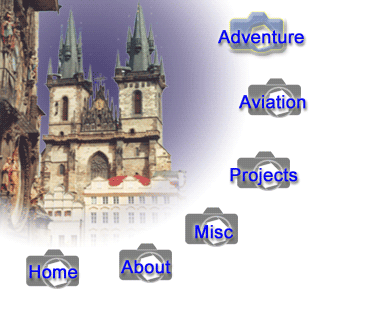AFGHANISTAN
It had been about 20 years since I last went on a wartime deployment. However, my military experience and connections gave rise to this "opportunity" in Afghanistan. I say "opportunity" because during active duty deployments, there was little choice involved. Now as a contractor, it was a voluntary decision with reasonable financial motivation. After three years of school earning my PhD, a boost in finances during the holiday break was welcome timing. Besides, who am I to turn down a new adventure?!
I completed all the pre-deployment duties not knowing if I would go. A big part of the prep was some time at the former Blackwater facility in North Carolina. It took me a few days of being in the area to also start noticing the "First in Flight" license plates and billboards for Kitty Hawk and realize I was close to the Wright Brothers Memorial. Nothing gets past me... at least if a billboard and a thousand license plates are involved.
When the word came to go, I had two days to secure travel, finish packing and get on a plane. The flight was long and I wasn't quite sure what to expect once I got there since I had only limited insight into my duties.
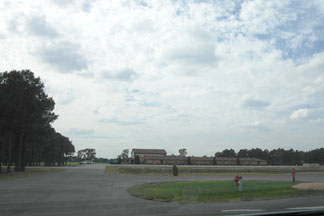
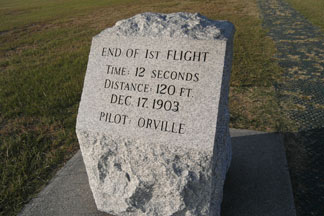
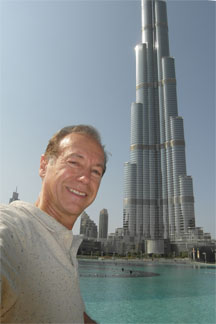
Blackwater lodging
The actual location of the Wright Brothers' first flight!
Yep, that's a tall building!
ARRIVAL
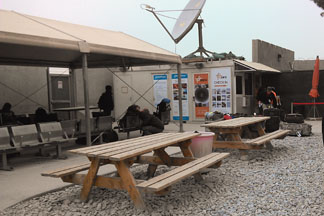

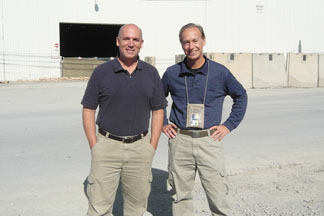
Technically there are two predominant colors at Kandahar: concrete and dirt. I found myself day dreaming of forests and waterfalls. Saudi is beige like 1990s computers. Kandahar is dirt. Dirt gets kicked up by the constant vehicle traffic and dirt gets kicked up by every little breeze. Dirt gets into clothes and possessions and it generally rises into a layer of about 500 feet high when the wind is calm. Although rain can be a welcome relief in a desert, especially to knock down all the dirt, the only thing worse than dirt is mud. Like the dirt it comes from, mud is everywhere. It's pasty. It makes you welcome the dirt. Fortunately, I only had a few days of light rain and I could find solid ground or rocks to walk upon. I heard the stories about "real" rain and how the the "poo ponds" would overflow and there would be at least a foot or more of mud and muck that invaded anywhere you needed to be. Dirt was good. I'm still coughing up that goodness.
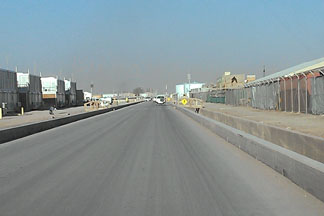
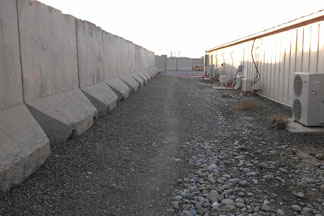
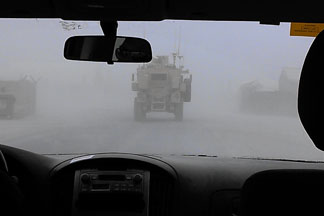
ACCOMODATIONS
Although large tents and quonset huts are still part and parcel of the military, shipping containers are the true face of our modern military. I guess it makes sense since the commercial shipping industry has a huge infrastructure built around standard shipping containers. All that has been required is to modify them into living quarters, bathrooms, showers, office space and just about anything else that requires a room. All things considered, it's not too bad for war zone accommodations.
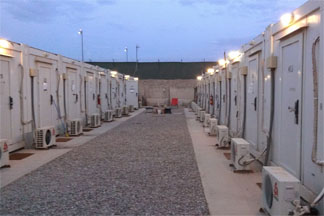
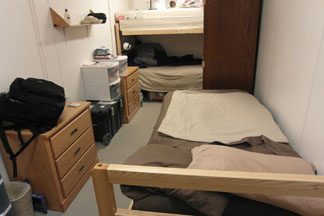
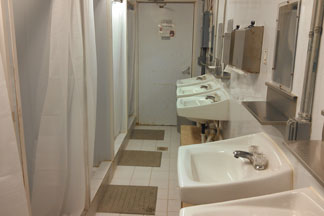
Affectionately known as the "cans", these are the rooms. The shipping containers are modified for electricity, lighting and heating/cooling. Oh, and a door. I've heard a cost for each mod, so I must be looking at a really fabulous place here.
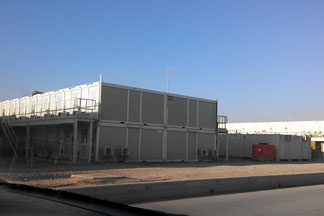
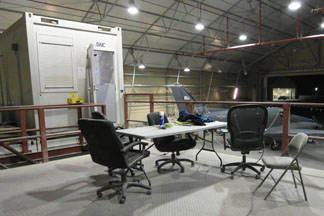
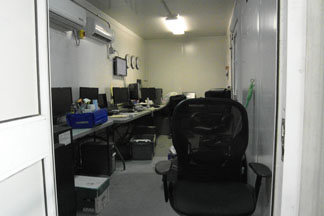
One can, two cans, beige cans, double cans. The main side of base has a much higher personnel density. Our accommodations were moved to the remote side of base before I arrived. Almost all of the flight line activity took place on our side of the base, so it was constantly noisy and busy, but not so crowded.
I was in this upper connex overlooking the hangar operations. One of our aircraft is visible in the hangar.
CHOWAGE
I'll have to say, the food was surprisingly good. There were several dining facilities on base, but only one on our side of the base. All of the other nationalities' dining facilities were on the main side of base, which included fish & chips with the Brits, stir fry at the Far East and several other options, most of which I generally did not have access to. Every facility had handwashing stations which was a requirement upon entry. I was pleased to see they took cleanliness seriously in the dining facilities for both the employees and the personnel. Every Friday was surf & turf. My first experience was a reasonable steak and a real lobster. My hopes were high, but I soon discovered "surf" usually meant highly battered popcorn shrimp or more often battered fishy catfish. I didn't know catfish were saltwater inhabitants. Aside from a certain monotony, the food was good. Twenty years prior, every meal was a variation of "red Shiite with rice" (you can sound it out).
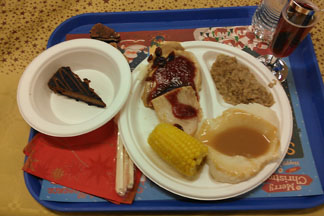
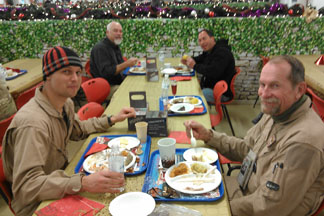
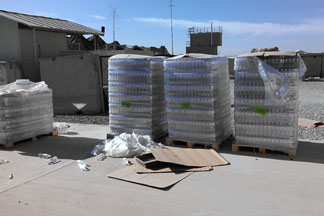
Christmas and Thanksgiving dinners were duplicates. The turkey was real and everything was decent. I could've lived off the chocolate cheesecake alone, but I usually stuck to kiwis for dessert.
WALKING
A lot of the uncertainty in the pre-deployment prep is what to bring. I received decent prep advice, but what I remember most from Scott was to bring a "scrunchy" for the shower; and some shower clogs. Why was the scrunchy so important that it was mentioned at least three times? I don't know, but I made sure I had an entire duffle bag full of the dang things! But, what did I figure out once I got there? I walked everywhere, so outfitting to walk was important. This meant shower shoes that were all-terrain to get across the rocks to the showers/bathrooms and back. Good boots/shoes to get around with overboots or some type of mud boot that can be removed with alternate shoes/slippers for the rooms. A rain poncho and warm jacket for winter along with a hat. A reflective belt was required. A flashlight was necessary.
A good sense of direction helped since everything looked the same at first; concrete barriers surrounded all facilities with openings to slip into the facility. The outdoor air was often atrocious. Although I've known about the burn pits, I was not prepared for this. The burn pits were constantly in use and absolutely everything toxic you could imagine was burned in open air. If the prevailing wind took the smoke your direction, it was brutal. However, the more common scenario was the no-wind inversion layer that built up night after night. The smoke would become trapped in the stagnant air just above the base and cause a wide-spread breathing hazard. Most people seemed to just deal with it. I immediately ordered a filtered bandana and then found a charcoal-based mask for the bandana. It was a good set up that also kept me warm during the freezing temperatures. I couldn't understand how many people just endured it and then smoked as well!
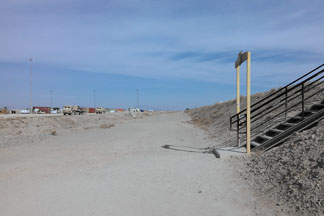
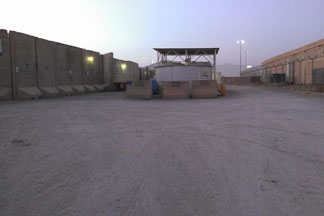
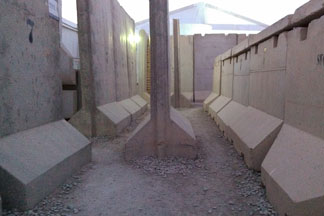
This was my daily walk behind the berm. To the left were all of the helicopter operations. Way in the distance on the right is the black dot that was our living compound. The stairs to the right led to the dining facility. The berm protected the base proper, but there was enough distance to the perimeter that I felt safe enough walking on this side of the berm.
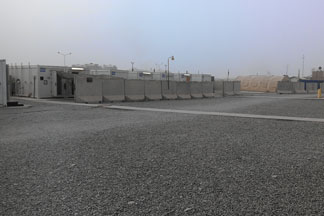
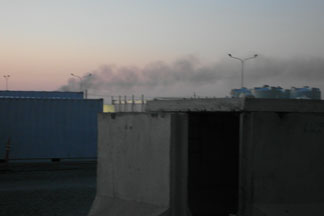
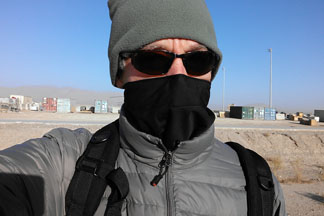
This is this the walk from where I'm standing at my room to the bathrooms and showers. It was particularly pleasant in the middle of the night with temps in the teens.
WAR ZONE
It was an active war zone and operations ran 24 hours a day, every day. It was constantly noisy, constantly busy, and constantly dirty. We came under attack a handful of times while I was there. However, the attacks were limited to non-precision rocket or mortar attacks against a rather large base. One time my ears got a little rattled from one of the rocket attacks, but otherwise the overall threat was limited. Our duties were only part of a huge overall military operation at the base. We ran sophisticated ISR (intelligence, surveillance, reconnaissance) which was certainly responsible for catching insurgents in the act and tracking them for "roll up".
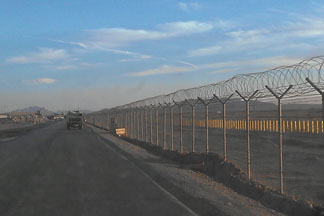
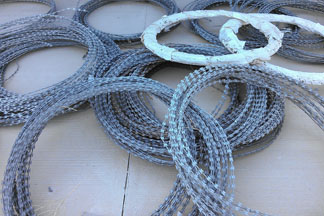
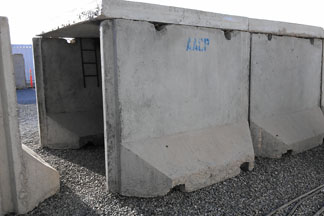
This was the perimeter fence. Only well-equipped and well-armed personnel with specific duties went outside the perimeter.
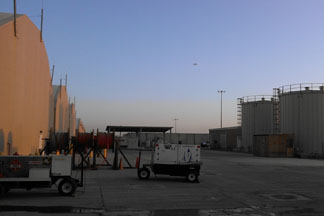
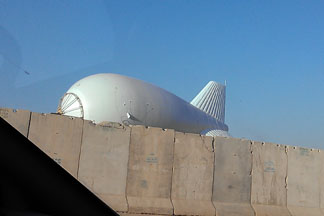
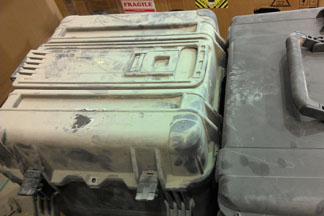
Our hangar was first on the left which opened toward the ramp on the opposite side. This is looking south and the runway was just beyond the row of hangars. One of the aerostats can be seen airborne, tethered in the distance.
PARTING SHOTS (So to speak)
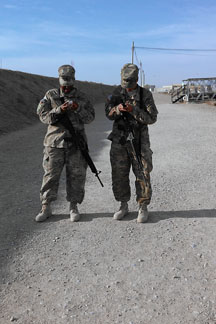
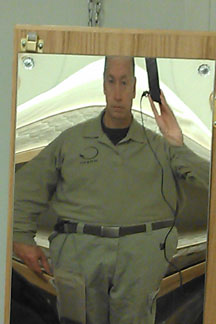
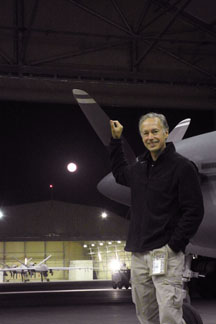
Even fully armed in a war zone, texting is apparently important! I was walking to work and just about to pass these two women when they both stopped and started texting. I stopped and had to retrace a few steps to get this snap. They never noticed my actions...
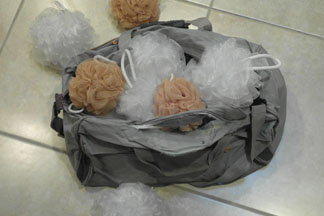
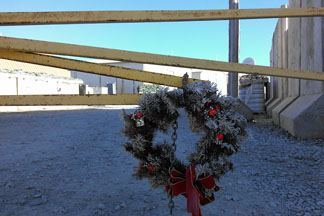
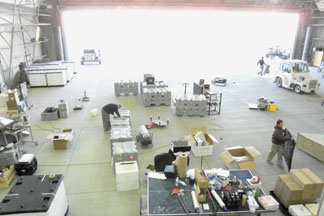
A jacket would've been nice... or a change of underwear... some toothpaste maybe...
